For our second of July's Galactoscopes, we have quite the mixed bag: two winners and two losers. Aren't you glad you've got us to navigate the dross for you?
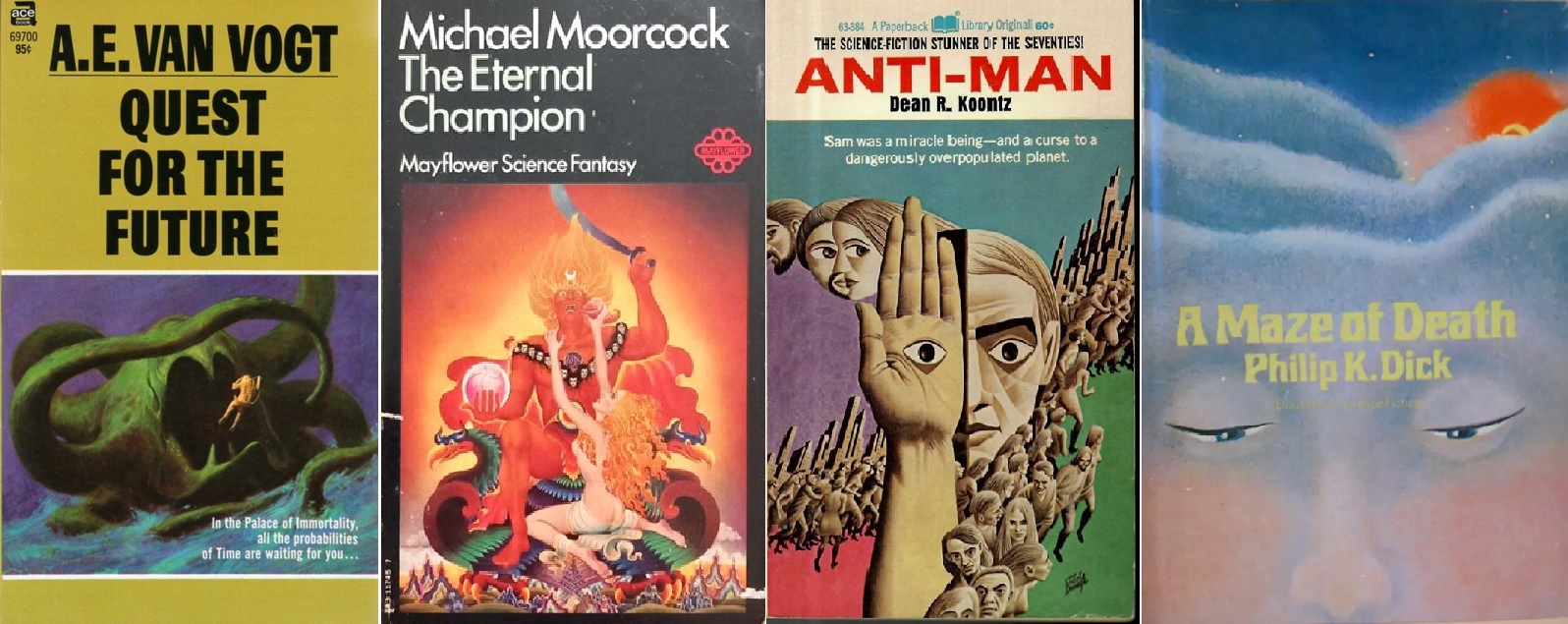
For our second of July's Galactoscopes, we have quite the mixed bag: two winners and two losers. Aren't you glad you've got us to navigate the dross for you?

We're breaking up this month's Galactoscope in two—and the dross leads the back. The next three books are all sub-mediocre, but the reviews are well worth the price of admission!

Continue reading [July 18, 1970] Two-star three step (July 1970 Galactoscope)
And yet our June Galactoscope continues! We have a work by a brand new novelist (though the author is no longer new to the SFnal scene), an exciting novel by a vanguard of the New Wave, and the return of two familiar but still fresh writers. Science fiction truly is a young man's game this month!

So many books this month, and this time, we've got all superlatives. Check out the second June Galactoscope!
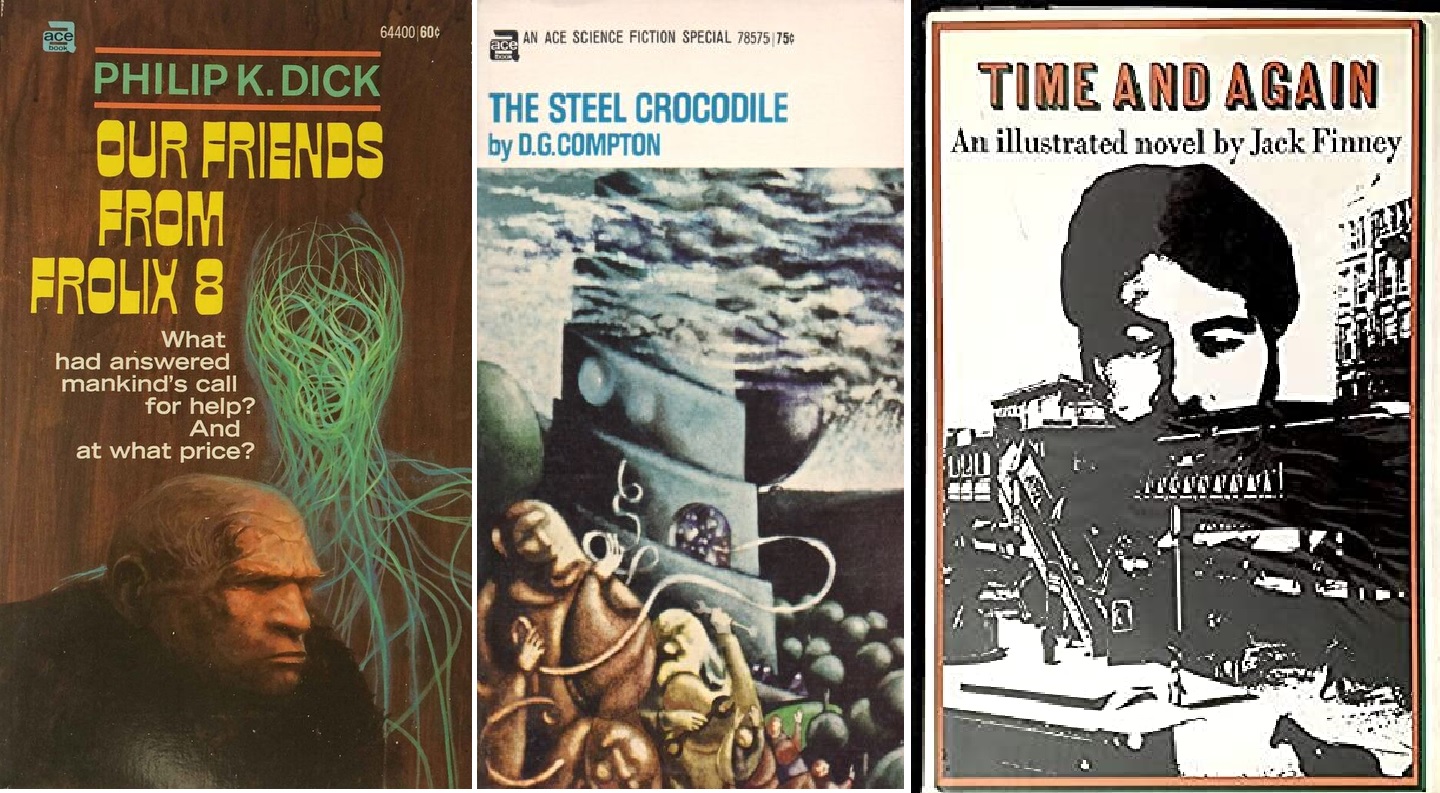
Continue reading [June 17, 1970] Time and Again (June Galactoscope Part Two!)
This month saw such a bumper crop of books (and a bumper crop of Journey reviewers!) that we've split it in two. This first one covers two of the more exciting books to come out in some time, as well as the usual acceptables and mediocrities. As Ted Sturgeon says: 90% of everything is crap. But even if the books aren't all worth your time, the reviews always are! Dive in, dear readers…


by David Levinson
The Matter of Britain
When I was a boy, someone gave me Howard Pyle’s The Story of King Arthur and His Knights. For many years, I would occasionally look at the pictures, but never bothered to read it. I finally did when I was 14 or 15, and I was hooked.
All things Arthur became an obsession. I wasn’t satisfied with modern retellings and hunted long and hard for a decent modernization of Sir Thomas Malory. That led to Continental poets who wrote about Arthur, like Wolfram von Eschenbach and Chrétien de Troyes. Once I had access to a university library, I discovered the Welsh legends and then the early Medieval and Dark Age historians who mentioned him by name or indirectly. Suddenly, my obsession with King Arthur merged with my obsession with ancient history, and I was off again.
Eventually my ardor cooled due to a lack of new things to learn and the demands of being an adult, but for 15 or 20 years I lived and breathed this stuff. And now, Mary Stewart has brought it all back.
The Crystal Cave, by Mary Stewart

Continue reading [May 2, 1970] Gaudy Shadows in the Crystal Cave (May 1970 Galactoscope)
Tune in tomorrow morning (April 17) for FULL APOLLO 13 SPLASHDOWN COVERAGE!!!
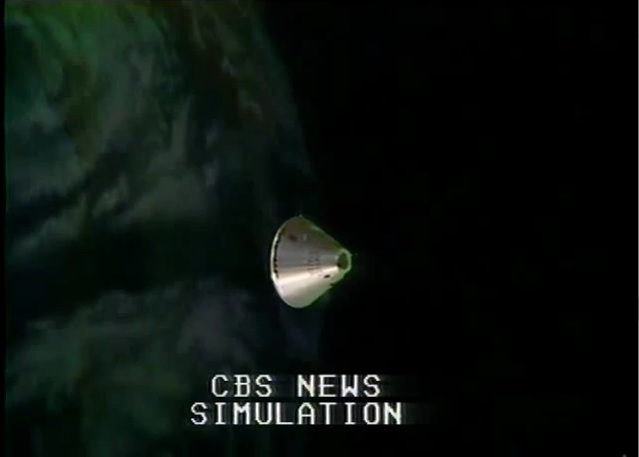

by Victoria Silverwolf
The author is better known around these parts for his sword-and-sorcery yarns about Brak the Barbarian, firmly in the tradition of Robert E. Howard's tales of Conan. This new novel is a horse of a different color.

Cover art by Richard Powers
The planet Missouri had a revolution some time before the story begins. Advanced technology and a bureaucratic form of government were replaced by nineteenth century ways of doing things and fierce individualism.
In other words, the place now resembles Hollywood's fantasy of the Old West. There are some so-called savages who play the role of American Indians. Towns are full of outlaws and dance hall girls. There are sheriffs around, supposedly to maintain law and order, but they aren't very effective.
Our long-suffering hero is Zak Randolph, a minor government worker who ekes out a living by supplying souvenirs (such as miniature outhouses) to tourists and staging phony shootouts to entertain visitors from other worlds. He also arranges to have local badmen sent to more civilized planets to amuse those who hire them.
This latter function gets him in trouble. One of the leased gunfighters heads back to Missouri before his contract runs out. Zak has to track him down or risk losing his position. (What keeps him on the wild-and-wooly planet at all are his girlfriend and the presence of native plants that supply minerals that can be made into jewelry. Otherwise, he's a peaceable sort who hates the shoot-first-and-ask-questions-later culture of the place.)
Along the way, he has to deal with ruffians who despise him as a coward. There's also the mystery of a legendary gunfighter called Buffalo Yung. Zak isn't sure this terrifying figure really exists. Then he gets reports from various places that he's been shot dead, apparently more than once. And what does this have to do with the disappearing bodies of lawmen killed by Yung?
Continue reading [April 16, 1970] Junk Day for Ice Crowns (April 1970 Galactoscope)
As luck would have it, the first three novels to be reviewed this month were all by women! They all have something else in common—they each have both merits and demerits that sort of cancel out…neither Brown, Russ, nor Norton quite hit it out of the park this time at bat.

by Victoria Silverwolf
In Memoriam
An unavoidable note of sadness fills this review of a newly published novel. The author died of lymphoma in 1967, at the very young age of 41. With that in mind, let's try to take an objective look at her final novel.
The Waters of Centaurus, by Rosel George Brown
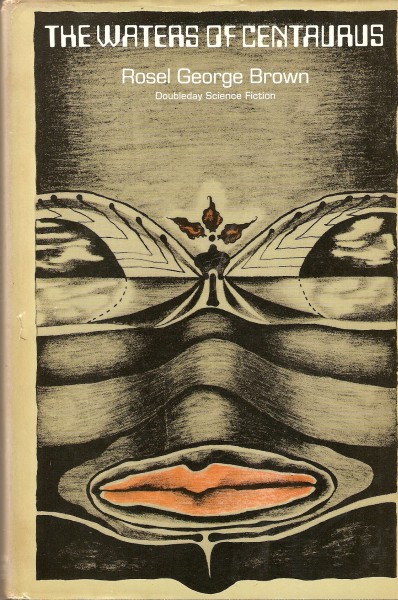
Cover art by Margo Herr
This is a direct sequel to Sibyl Sue Blue. My esteemed colleague Janice L. Newman gave that novel a glowing review. In fact, our own Journey Press saw fit to reprint it in a handsome new format.
Sibyl Sue Blue is back. She's a forty-year-old police detective and a widow with a teenage daughter. She's fond of cigars, gin, fancy clothes, and attractive men.
Continue reading [March 6, 1970] The Waters of Centaurus, And Chaos Died, and High Sorcery

by Victoria Silverwolf
Compare and Contrast
Two new science fiction novels that fell into my hands are similar in many ways. Both are by British writers and might be classified as action-packed adventure yarns. Each features a rather ordinary hero who gets involved in a secret scientific project of epic proportions. Both protagonists fall in love along the way. Each has a touch of satire and a cynical attitude about politics.
The main difference is that one takes place in the present and the other is set some centuries from now. Let's take a look at the first one.
98.4, by Christopher Hodder-Williams

Cover art by David Stanfield.
Our hero has just lost his job and his live-in girlfriend. He worked as a security expert at a research facility, but certain parts of it were off limits to him. A fellow claiming to work for the United Nations hires him to do some unofficial investigating of the place.
I should mention at this point that everybody the protagonist meets refuses to tell him everything that's going on. I suspect this is a way for the author to keep the reader in suspense. It's also worthy of note that the hero, who is also the narrator, casts a jaundiced eye on the world around him.
Meanwhile, the Soviet Union and members of the Warsaw Pact send troops into Czechoslovakia to suppress the liberal reforms known as the Prague Spring. This part of the novel is torn straight from the headlines.
As the Cold War heats up, things get complicated. There's an accident at the facility that causes two ambulances to rush away from the place, although there's apparently only one victim. The hero runs into a mysterious woman who knows more about the situation than she lets on (like a lot of characters in the novel.) She's also suffering from some kind of disease she won't discuss. As you'd expect, love blooms.
Add in a gigantic hidden complex of underground tunnels and automated submarines. The big secret behind everything involves Mad Science at its maddest. The protagonist and a few allies battle to stop World War Three from breaking out, and we'll finally learn what the numerical title means. (I suppose it's also an allusion to George Orwell's famous novel 1984, but that's not all.)
Not the most plausible plot in the world. You have to accept the fact that there could be a secret project extending over many miles without anybody finding out about it. If you can suspend your disbelief, it's a very readable page-turner.
Three stars.
The Weisman Experiment, by John Rankine

Cover art by Richard Weaver.
Let's jump forward hundreds of years. People are rigidly assigned to different levels of society, with their jobs chosen for them. They can't even marry until the powers that be allow them to do so. There are some folks living in the wilderness outside this system. If the previous novel tipped its hat to 1984, this one owes something to Brave New World by Aldous Huxley.
Our hero works for what seems to be the planet's only news agency. His job is only vaguely described, but it seems to be some kind of editing or proofreading position.
The daughter of the boss fancies herself one of those Spunky Girl Reporters from old black-and-white movies. (That's my interpretation, not the author's.) Somehow she came across a reference to something called (you guessed it) the Weisman Experiment. This happened a few decades ago, and the government has repressed all knowledge of it.
The boss tells the protagonist to help his daughter investigate the mysterious experiment. As soon as they set out, somebody tries to kill them. Whenever they track down one of the few surviving people who remember the Weisman Experiment, that person is murdered.
The hero and the daughter (who will, of course, eventually fall in love) are separated by the powers that be before they get too far. The protagonist goes through some brainwashing to straighten him out, but it doesn't quite work.
The rest of the novel takes us to North Africa, where the hero acquires an ally. (This character is a bit embarrassing, as she speaks in an accent and ends almost all her statements with I theenk.) Next we go to an underwater facility, where he's reunited with the daughter. Eventually, we wind up at the estate of an incredibly wealthy fellow, where we finally find out what the heck the Weisman Experiment was all about.
Like the other novel, this is a fast-moving tale with something to say about the way society is set up. Worth reading once.
Three stars.

We have two short novels from very different authors, one being a promising young writer and the other one of the more reliable workhorses in the field. Neither novel is all that good, but at the very least I needed something less demanding after I had recently covered Macroscope.
Grimm's World, by Vernor Vinge

Vinge has written only one or maybe two short stories a year so far, but all of them have been interesting, if not necessarily good. Grimm’s World, his debut novel, is itself an expansion of the novella “Grimm’s Story,” which appeared in Orbit 4 last year. The novel is split into two parts, with the first being “Grimm’s Story,” which as far as I can tell Vinge did not change significantly. If I was just reviewing the first part, I would say it’s fairly good, certainly in keeping with Vinge’s other short fiction. High three to a low four stars.
Unfortunately it doesn’t stop there.
The short of it is that Svir Hedrigs is an astronomy student who gets roped into a scheme by the notorious Tatja Grimm and her crew, those who make the speculative fiction (although here it’s called “contrivance fiction”) magazine Fantasie, a publication that is so old (centuries old, in fact) that its oldest issues seem to have been lost to time, if not for maybe a handful of collectors. The world is Tu, a distant planet that, like Jack Vance’s Big Planet, is vast and yet poor in metals. (Indeed this reads to a conspicuous degree like a Vance pastiche, albeit without Vance’s sardonic humor, and thus it’s not as entertaining.) Something to think about is that characters in an SF story are pretty much never aware that they’re inside a work of SF, and indeed SF as a school of fiction is rarely mentioned, much like how characters in a horror story are often blissfully unaware (for the moment) that they’re birds in a blood-red cage. Yet in Grimm’s World, what we call speculative fiction these days is held as the highest form of literature. It’s a curious case of characters in SF basically realizing that their world itself is SFnal, and therefore the possibilities are near-endless.
Of course the scheme to rescue a complete collection of Fantasie turns out to be a ruse, with Grimm usurping the tyrannical ruler of the single big land mass on this planet, on the falsehood that she is descended from the former monarchy. It’s at this point that the first part ends, and there’s a rather gaping hole in continuity between parts, the result feeling more like two related novellas than a single work. The second part is considerably weaker. What began as a nice planetary adventure turns into something more military-focused, as the people of Tu are terrorized by a race of humanoid aliens, whom Grimm may or may not be in cahoots with. Said aliens take sort of a hands-off approach with the Tu people, provided that their technology doesn’t become too advanced (a high-powered telescope, “the High Eye,” becomes increasingly an object of fascination as the novel progresses), and also that the Tu people reproduce at a rate to the aliens’ liking. What the aliens intend to do with the human surplus is absurd and raises some questions which Vinge never answers. There’s also a love triangle (or perhaps a love square) that I found totally unconvincing, if only because Svir seems to get a hard-on for whatever woman is within his field of vision.
I liked the first part but found the second part a bit of a slog.
Barely three stars.
The Rebel Worlds, by Poul Anderson

Anderson’s writing is comfortable and comforting: rarely surprising, but often (not always) a mild stimulant that can help one during trying times. Just when I think everything might be going to shit, there’s a new Poul Anderson novel—possibly even two of them. The Rebel Worlds is short enough that it could’ve easily made up one half of an Ace Double, except this is from Signet. A few years ago we got Ensign Flandry, which saw the early days in the career of Dominic Flandry, clearly one of Anderson’s favorite recurring characters (although he’s not one of mine). The Rebel Worlds takes place not too long after Ensign Flandry, with Flandry now Lieutenant Commander and with more responsibilities, but still very much the playboy.
Hugh McCormac, a respected admiral of the Empire, is imprisoned, only to break out and go rogue, taking those loyal to him along for the ride. The prison breakout blossoms into a full-on rebellion across multiple worlds, which is a rather big problem for the Empire. Flandry, despite knowing that the Empire is on the brink of collapse and that “the Long Night” will begin soon enough, stays aligned with those in power—perhaps a sentiment Anderson himself shares, given he supports the war effort in Vietnam despite said war effort turning more sour by the week. Indeed Flandry’s seeming contradiction, between his extreme individualism and his allegiance to what he knows is a dying government, is both the core of his character and something he shares with his creator. We also know, from other Flandry stories, that the Empire will in fact soon collapse and that the Long Night, a centuries-long era of barbarism and disconnect across many worlds, will soon commence. And we know that Flandry is in no imminent danger, for better or worse. The real tension, then, lies in McCormac and his wife Kathryn, who has been taken captive by the Empire on the basis that she might cough up valuable info on her husband.
Something I admire about Anderson, despite sharply disagreeing with his politics, is that he’s evidently fond of anti-heroes (Flandry, Nicholas van Rijn, David Falkayn, Gunnar Heim), but he also sometimes concocts anti-villains, in that these characters are technically antagonists but meant to be taken as sympathetic or noble. Despite being a thorn in the Empire’s side, McCormac is basically a good man who cares about those who work for him, never mind he also loves Kathryn very much. Much less sympathetic is Snelund, a planetary governor who is horrifically corrupt, and who also wants to put his filthy hands on Kathryn while she is his prisoner; yet this man also watches over Flandry’s assignment. It should not come as a surprise then that Flandry rescues Kathryn and hides out with her on the planet Dido, which has some unusual alien life. It also shouldn’t be surprising that the two fall in love, although understandably Kathryn still cares for McCormac and isn’t eager to be swept off her feet. (I also must say Anderson tries what I think is a 19th century Southern aristocratic accent with Kathryn, and it’s a bit odd.)
So business as usual for Flandry.
The major problem with The Rebel Worlds is that it’s too short. This is a problem Anderson’s novels sometimes have, but it seems to me that scenes and maybe entire chapters that would have fleshed out the conflict are simply not here. Sure, the plot is basically coherent, but we’re far more often told about things than shown them, to the point where I wonder if Anderson was working with a deadline that he struggled with, even with his near-superhuman writing speed. It’s a fine novel that could have easily been better, with some more time.
A solid three stars.

by Cora Buhlert
A New Chancellor and a New Era

In my last article, I mentioned that West Germany was about to have a federal parliamentary election. Now, that election has come and gone and has led to sweeping political change. Because for the first time since the founding of the Federal Republic of Germany in 1949, i.e. twenty years ago, the chancellor is not a member of the conservative party CDU.
Since 1966, West Germany has been governed by a so-called great coalition of the two biggest parties, the above mentioned conservative CDU and the social-democratic party SPD. The great coalition wasn't particularly popular, especially among young people, but due to their large and stable majority, they also got things done.
When the election results started coming in the evening of September 28 and the percentages of the vote won by the CDU and SPD respectively were very close, a lot of people expected that this meant that the great coalition would continue. And indeed, this is what many in the CDU and even the SPD would have preferred.

However, SPD head Willy Brandt, former mayor of West Berlin and West German foreign secretary and vice chancellor in Kurt Georg Kiesinger's great coalition cabinet, had different ideas. And so he chose to enter into coalition negotiations not with the CDU, but with the small liberal party FDP. These negotiations bore fruit and the 56-year-old Willy Brandt was sworn in as West Germany's fourth chancellor and head of a social-democratic/liberal coalition government on October 22.

Personally, I could not be happier about this development. I've been a supporter of the SPD for as long as I've been able to vote for them (sadly, I spent the first years of my voting age life under a regime where there were no elections) and I have liked Willy Brandt since his time as mayor of West Berlin. What is more, Willy Brandt is not a former Nazi like his predecessor Kurt-Georg Kiesinger, but spent the Third Reich in exile in Norway and Sweden. Of course, "not a former Nazi" should be a low bar to clear, but sadly West Germany is still infested with a lot of former Nazis masquerading as democrats. And indeed, the one blemish on the otherwise positive results of the 1969 federal election is that the far right party NPD, successor of the banned Nazi Party, managed to gain 3.8 percent of the vote, though thankfully the five percent hurdle keeps them out of our parliament.

In one of his first speeches as chancellor, Willy Brandt said he and his government want to "risk more democracy" and promised long overdue reforms. He also wants to initiate talks with East European governments to thaw the Cold War at least a little. I wish him and his cabinet all the best.
A Magical Mystery Tour: The Unicorn Girl by Michael Kurland

During my latest trip to my trusty import bookstore, I came across an intriguing looking paperback in the good old spinner rack called The Unicorn Girl by Michael Kurland. From the title, I assume that this would be a fantasy tale along the lines of The Last Unicorn by Peter S. Beagle. The Unicorn Girl, however, is a lot stranger than that.
For starters, The Unicorn Girl is actually a sequel to The Butterfly Kid by Chester Anderson, which my comrade-in-arms Kris Vyas-Myall reviewed last year. Like Kid, it's also a book where the author and his best friend, i.e. Michael Kurland and Chester Anderson, are the protagonists.
The Unicorn Girl starts off not in a far-away fantasyland, but in a place that – at least viewed from this side of the Atlantic – seems almost as fantastic, namely a coffeehouse cum performance venue called the Trembling Womb on the outskirts of San Francisco. Our hero Michael (a.k.a. Michael Kurland, the author) is sitting at a table, trying to compose a sonnet, while his friend Chester (a.k.a. Chester Anderson, the author of The Butterfly Kid) is performing on stage, when all of a sudden the girl of Michael's dreams walks in – quite literally, because this very girl has been appearing in Michael's dreams since childhood.
Michael does what anyone would do in that situation: he gets up and talks to the girl. Turns out that her name is Sylvia and that she's looking for her lost unicorn. Michael understandably assumes that Sylvia is playing a joke on him, especially since he had addressed her in the sort of pseudo-medieval language you'd hear at a Renaissance Fair. Sylvia, however, is deadly serious. She tells Michael and Chester that she's a circus performer and that her unicorn Adolphus ran away, when they stepped off the train. There's only one problem: train service into San Francisco ceased six years before. As far as I can ascertain from this side of the Atlantic, this isn't true and San Francisco does have train service, as befits a major metropolis, all which suggests that Michael and Chester live in the future, even though their surroundings seem very much like something you could find in San Francisco right now.
When Michael and Chester ask Sylvia, what year it is, she replies "1936", so Michael and Chester assume that time travel is involved. However, the truth is still stranger than this, for Sylvia seems to have no idea where she is. True, San Francisco today is very different from San Francisco in 1936, but you'd assume that Sylvia would at least recognise the name of the city. The fact that she keeps calling California "Nueva España" is also a clue that Sylvia hails from further afield than our version of 1936.
When Michael, Chester and Sylvia head out to look for the missing unicorn, they are met by some Sylvia's circus friends: Dorothy, an attractive but otherwise normal human woman, Giganto, a cyclops from Arcturus, and Ronald, a centaur. Upon seeing this strange trio, Michael and Chester immediately assume that they are experiencing drug-induced hallucinations – as do two random bystanders. It's a reasonable assumption to make, though two people normally don't experience the same hallucinations, even if they took the same drugs. And Chester swears that he hasn't slipped Michael any drugs…
Methinks we're not in Kansas – pardon, San Francisco – anymore
Before our heroes can get to the bottom of this mystery, they split up to search for the missing unicorn, only to find a flying saucer. There is a mysterious blip and Michael, Chester, Sylvia and Dorotha suddenly find themselves elsewhere and elsewhen, namely in the early Victorian era or rather a version of it that is very reminiscent of Randall Garrett's Lord Darcy stories. I guess they should count themselves lucky it wasn't "The Queen Bee" instead.
The sojourn in the Victorian era according to Randall Garrett ends, when our heroes find themselves falsely accused of jewellery theft (and the way the true culprits accomplished those thefts is truly fascinating). During their escape, there is another blip and our heroes find themselves in World War II in the middle of a battlefield…
For most of its pages, The Unicorn Girl is a picaresque romp through time, space and dimensions. Literary allusions abound, for in addition to the Victorian era according to Randall Garrett, our heroes also briefly visit J.R.R. Tolkien's Middle Earth. It's all great fun, though eventually, there needs to be an explanation for this weirdness. And so, Michael and Sylvia, who have been temporarily separated from Chester and Dorothy, figure out – with the help of Tom Waters, a friend of Michael's and Chester's who'd disappeared earlier – that the blips always happen in moments of danger and crisis. They provoke another blip and finally land in a world that at least is aware that there is a problem with visitors from other times and universes showing up in their world, even if they have no idea why this is happening.
Turns out that all the different time lines and universes are converging, which may well mean the end of this world and any other. Luckily, there is a way to fix this issue and send everybody back to their own universe. The drawback is that solving the problem will be very dangerous. What is more, Michael, Chester and Tom on the one hand and Sylvia, Dorothy and the unicorn (with whom Sylvia has been reunited by now) on the other will return to different universes, even though Michael and Sylvia as well as Chester and Dorothy have fallen in love amidst all the chaos…
A Trippy Delight
The Unicorn Girl is not the sort of book I would normally have sought out, since I'm not a big fan of psychedelic science fiction. However, I'm glad that I read this book, because it's a true delight.
The novel is suffused with humour and wordplay, whether it's the tendency of the Victorians from the Randall Garrett inspired world to speak in very long, very complicated sentences or Michael parodying a wine connoisseur by evaluating plain water. The dialogue frequently sparkles such as when Sylvia asks, "Do you not travel to far-off planets?" and Chester replies, "We barely travel to nearby planets."
A fabulous adventure. Four stars.

by Gideon Marcus
Unusually for the Galactoscope, our monthly round-up of new science fiction publications, we're starting this article with a stop press. It's simply too big an item to ignore.
If you read the papers this morning, you know the big news was that the Mets played the winning game of the World Series last night, against the Orioles. Competing for inches on the front page was the largest, the most coordinated, the most widespread anti-war demonstration this country has yet experienced.
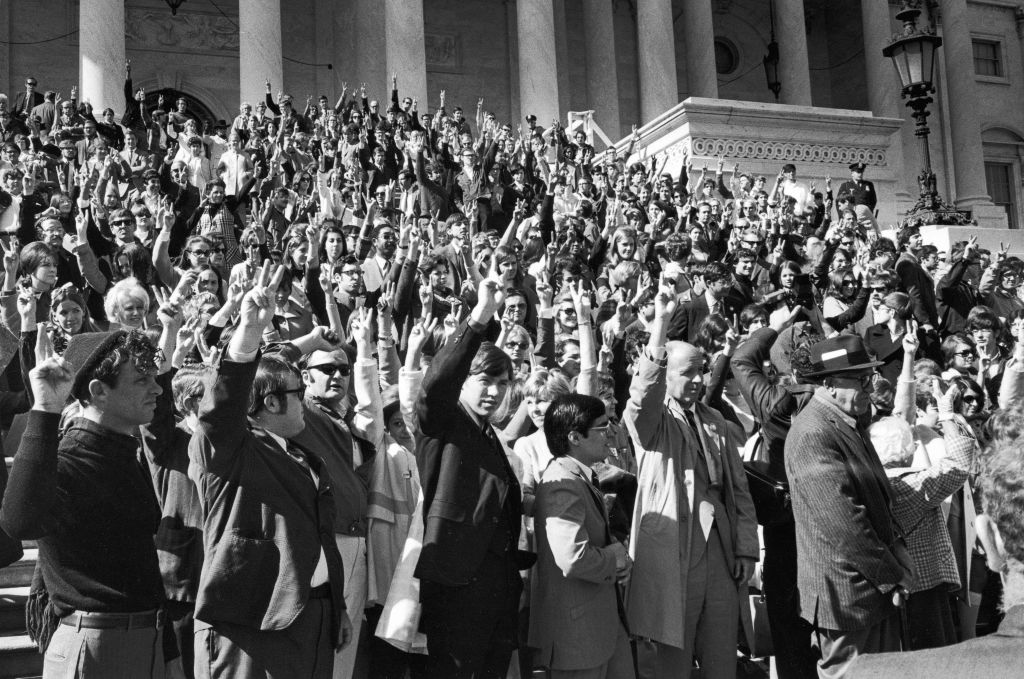
Demonstrators in Washington
One million people, in every state of the union, participated in Vietnam Moratorium Day. Originally planned as a nationwide strike, instead, attendees made highly their protests highly visible—and peaceful. A quarter of a million marched down Pennsylvania Avenue in the nation's capital, echoing Dr. King's march on Washington in 1963. 100,000 gathered in Boston, with similar numbers protesting in New York (where Mayor John Lindsay is rumored to have given tacit support) and Miami. My local rag reported that there were counter-protests, too, but I have to wonder how big they were.
Closer to home, 1,500 gathered in Los Angeles to burn their draft cards. And at Palomar Community College, just ten minutes from my home, hundreds of students gathered for a "Teach-In". When word got out that protestors might take down the flag in front of the student union, a squad of football players was stationed at its base. No altercation occurred.
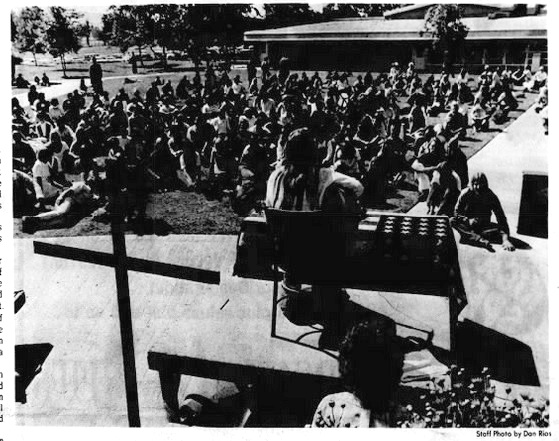
Protestors at Palomar
Will this demonstration alter the course of a war, which has killed tens of thousands of Americans and hundreds of thousands of Vietnamese? A spokesman for Richard Milhouse Nixon said last night, "I don't think the President can be affected by a mass demonstration of any kind." Comedian Dick Gregory retorted to the crowd in New York, "The President says nothing you kids do will have any effect on him. Well, I suggest he make one long-distance call to the LBJ ranch. "

Card-burners in Los Angeles
In any event, this may be just the first salvo fired in a peace offensive. Washington protest organizer Sam Brown said last night, "If there is no change in Vietnam policy, if the President does not respond, there will be a second moratorium."
And now on to book news—are this month's science fiction titles as noteworthy?

By Mx Kris Vyas-Myall
Heartease by Peter Dickinson (as serialized in Look and Learn)

Copies of Ranger and Look and Learn from my collection inside the official binders
Regular readers of the Journey will probably know I am a big fan of British comic books. They may even recognize the name Look and Learn due to it containing the multi-Galactic Star winning Trigan Empire (formerly of Ranger).
However, I have not talked much about Look and Learn itself. It is by far the most expensive comic book on the market at 1/6-, almost triple the price of your standard copy of June or TV Century 21. In spite of this it has retained a significant market presence by presenting itself as an educational magazine for young people, in contrast to the naughtiness of Dennis the Menace, or the pulp space adventures of Dan Dare.
This, however, is not merely a trick. They have both some of the best comic strips on the market and non-fiction articles–better than you see in most magazines aimed at adults. Looking at the contents of a June issue we have:
As such, it is much easier for a kid to justify dropping their pocket money on this each week when they can also show their parents a page on the lifecycle of a butterfly and give them a series of facts from the life of Jane Austen between reading about spaceflight and the adventures of cowboys.

Example illustations for I Am David (left) and Tarka the Otter (Right) (uncredited)
However, outside of the comic strips Space Cadet and Trigan Empire, SF content is rare inside. Keeping to its educational mode, it tends towards historical fiction or uncovering the natural world. With serials tending to be works like The Silver Sword, Tarka The Otter or I Am David.
In fact, I cannot recall any prose serials that have been science fiction, before now. As such, with adult responsibilities getting the better of me, I hadn’t paid too much attention to these pieces. It was only when flicking back through them recently that I perked up at the name Peter Dickinson.
Last year he published The Weathermonger, a book that was much enjoyed by the folks here. This was not only by the same author but Heartsease also takes places in England under The Changes. It was serialised in 10 parts (from 8th March to 10th May 1969).
This is set in an earlier time in the history of this world. Whilst Weathermonger is set when The Changes are a well-established way of life, this is in the earlier stages of these events. As we are told at the beginning:
This is a story about an England where everyone thinks machines are wicked. The time is now, or soon; but you have to imagine that five years before the story starts, because of a strange enchantment, people suddenly turned against tractors and buses and central heating and nuclear reactors and electric razors. Anybody who tried to use a machine was called a witch or stoned or drowned.

Illustrator uncredited
In the Cotswolds, Margaret and her cousin Jonathan live with her Aunt Alice and Uncle Peter, plus two servants Lucy and Tim, the latter of which is unable to speak. Near their village, an outsider is found using a radio and is sentenced to be stoned as a witch.
The horror of witnessing the stoning seems to break Jonathan out of the hatred the adults have, so he works with Margaret, Lucy and Tim to free the man condemned for witchcraft. Hiding him he reveals his name is Otto, he is an American sent to investigate the situation in Britain when he was caught. The children agree to get him back to his ship.
However, the local Sexton, Davey Gordon, is still on the hunt for Otto. What’s more he is suspicious of Lucy and Tim, given the latter’s disability. They all form a plan to help him escape using an old tugboat called Heartsease.
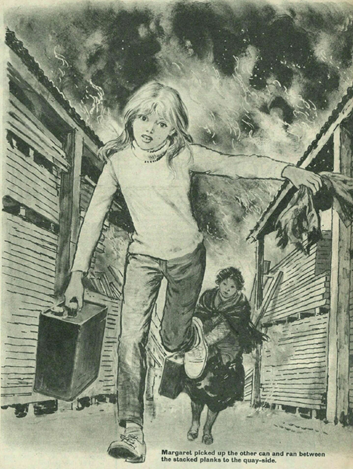
Illustrator uncredited
I can understand why this would appeal to the editors of Look and Learn. With the removal of technology, it resembles historical fiction and does not have the magical elements of The Weathermonger. In addition, it contains information on how locks work, so it can be marketed as educational.
It is a much smaller tale than The Weathermonger, just about young people trying to do the right thing as they get caught up in horrific events. But, for that, it becomes a bit of a deeper tale. As well as having plenty of adventure, it looks at how we treat others and posits some darker reasons why things may be happening than is revealed in the prior novel:
“…they’ve done so many awful things they’ve got to believe they were right. The more they hurt and kill, they more they’ve been proving to themselves they’ve been doing God’s will all along.”

Gollancz book edition. Unknown illustrator
Based on some fag-packet-maths I estimate the word count here is somewhere between a third to a half of what is in the book version, so there is likely more story to be told.
But for this serialized form, I will give it Four Stars.

by Victoria Silverwolf
Bigger and Better?
Two novels that are expanded versions of earlier, shorter works fell into my hands recently. Will this added verbiage improve them? Let's find out.
Worlds of the Wall, by C. C. MacAppp
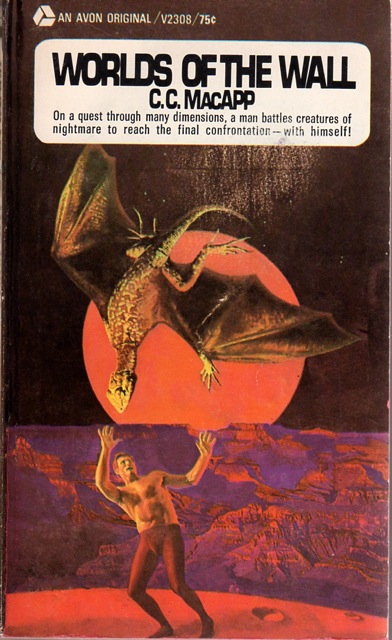
Anonymous cover art. Human and pterodactyl number one.
This book started life as a novelette called Beyond the Ebon Wall in the October 1964 issue of Fantastic. I reviewed it at the time, giving it two stars. That's not a good omen, but let's not give up hope.
Our hero is inside an experimental starship. He winds up near a planet that seems to be missing an entire hemisphere. Forget all this science fiction stuff, because the rest of the book is pure fantasy.
Landing on the weird world, the guy finds out that the place is divided in half by a gigantic wall. He sees two naked men fighting and an elderly fellow with a scarred face. The latter seems very familiar, which is a clue as to the novel's major plot twist.
The protagonist passes through the seemingly solid wall as if it weren't there. He meets a double for the elderly guy and hears a huge magpie recite an enigmatic poem. This begins an odyssey that involves becoming a galley slave, taking part in a hunt for a gigantic beast (which develops a bond with a hero), and battling a pirate captain allied with a sorcerer. It all winds up where it started.
This is the plot of the novelette, so what's new? The middle section of the novel, detailing the hero's adventures as a galley slave, is much longer. There's a vivid scene of the protagonist and his shipmates climbing down a gigantic cliff.
The new version is a slight improvement on the old one. The explanation for what's going on, involving multiple continua and time travel, still doesn't make much sense, but it's a little less incoherent that before.
Two and one-half stars.
Thbe Avengers of Carrig, by John Brunner
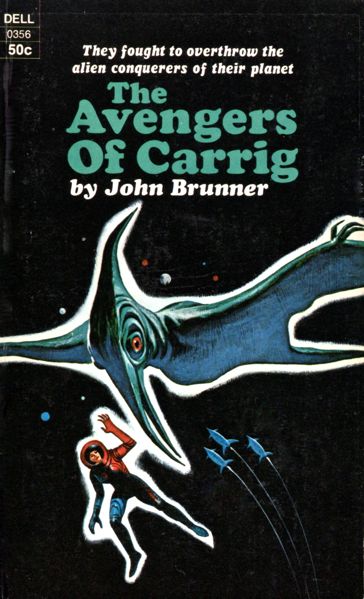
Cover art by Jack Gaughan. Human and pterodactyl number two.
A shorter version of this novel appeared in 1962 as half of an Ace Double, under the title Secret Agent of Terra. It was reviewed by my esteemed colleague Rosemary Benton, who gave the twin volume four stars as a whole.
The setting is a planet settled by human refugees from a nova that wiped out another colony world many centuries ago. The survivors have evolved into a medieval, feudal kind of society. Carrig is the dominant city-state. The place has an ancient ritual of choosing its leaders in an unusual fashion.
Contenders for the title of regent board gliders and try to kill the biggest and strongest specimen of the giant flying beasts that inhabit the planet. (The winner is called a regent because the creature is considered to be the true king.) If nobody slays the animal, which definitely puts up a good fight, the former regent retains the title.
A couple of strangers show up, one of whom easily kills the so-called king with what is obviously highly advanced technology. It's clear to the reader, if not the locals, that they're from another world. Along the way they kill a fellow who discovers their nefarious plan.
The victim was secretly an agent for the folks who keep an eye on refugee planets like this one, being careful to avoid interfering with their natural development, but also making sure other people don't take advantage of them.
When the dead man stops sending messages back to his superiors, they send a fledging agent, along with an older, more experienced one, to the planet to find out what happened. (The young agent is something of a snob and unpopular with the others, so this is one last chance for her to prove herself during what is supposed to be a routine mission.)
They don't know the bad guys are there (they think the deceased agent has gone silent for some other, less sinister reason) so they're taken completely by surprise when an enemy spaceship attacks. The young agent winds up in a frozen wasteland. We don't find out what happened to the older man until later.
As luck would have it, she joins forces with the fellow who was the favorite to become the next regent. Both of them win an unexpected ally in the form of one of the flying creatures, who turns out to be a lot more intelligent than they thought.
Like MacApp's novel, this is strictly an adventure story. The big difference is that Brunner offers a tighter, more unified plot (even if it does depend on some remarkable coincidences.) It's not a complex, ambitious work like Stand on Zanzibar or The Jagged Orbit, but it's highly competent entertainment.
Three and one-half stars.
Masque World, by Alexei Panshin

by Jason Sacks
Last year I reviewed the first book in Alexei Panshin's "Anthony Villiers" series, Star Well . I praised the book for its wry, often post-modern take on heroic fiction, digging Panshin's frequent absurd sidebars and silly takes on events.
Now the third book of the Villiers series is out, and Masque World offers much the same as his earlier book: it's absurd and wise, clever and sometimes frustrating, and a pretty delightful "shaggy dog" story.
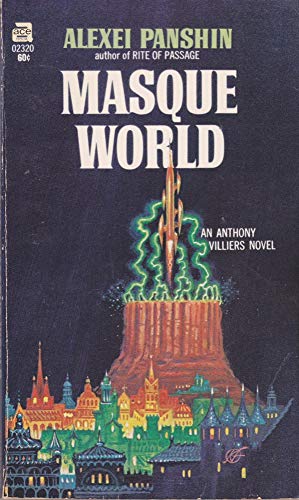
cover by Kelly Freas
This time Villiers and his pal, the Trog named Torve (a deliberately odd alien creature who is thoroughly uncanny for most people) have found their way to Delbalso, "a semi-autonomic dependency of the Nashuite Empire," as the introductory text informs us. When there, the duo gets deeply involved in all kinds of affairs in the kingdom, many centered around Villiers's uncle Lord Semichastny who is obsessed and addicted to melons (did you know there are over 100 different types of melons? Semichastny can tell you all about that topic, and many more, as if he's some sort of savant or young child in adult form).
Cultures are games played to common rules — for convenience. The High Culture, while not superior to very much, is a fair-to-middling game, and that is all.
There's also an angry robot bulter who seems to resent his subservient role and who tells spooky stories to the other mechanical creatures in Semichastny's castle, and there's a Semichastny friend who gets transformed when he puts on a costume, and there's a cult who seem incredibly happy – perhaps too happy for their own good.
Monism promises only one thing, to make you very very happy. There is a catch, of course. To be happy as a Monist, you must accept Monist definitions of happiness. If you can — you have a blissful life ahead of you. Congratulations.
A lot of this story, therefore, centers around the idea of identity, how to shed identity and how to transform identity; how identity conforms to crowds and how identity stands alone. This all does a wonderful job of showcasing Panshin's elusive commentary on the human condition. As becomes clear by the end, it's the humor and commentary which matter here, not the story.
Do places dream of people until they return?
For the longest time I kind of fought this book, trying hard to make sense of the twists and turns of its plot. Until, that is, I realized that plot is meant to be arbitrary and somewhat confusing. Its twists and turns reflect the mindset of Mr. Panshin, and that and his wordplay – highlighted here as excerpts – are the key things he wants to share with readers.
Holidays are no pleasure for anyone but children, and they are a pleasure only for children only because they seem new. Holidays are no pleasure to those who schedule them. Holidays are for people who need to be formally reminded to have a good time and believe it is safer to warm up an old successful party than to chance the untried.
Masque World is very loose and fun, a bit arbitrary and silly, and I enjoyed it alright. The book feels a bit indulgent at times, and Panshin's having a bit of a goof, but it's well worth 60¢ and 3 hours of your time.
The ending promises a fourth book in the series, to be called The Universal Pantograph. I do hope we get to spend more time in this wildly discursve world of the one and only Anthony Villiers.
3 stars
The Shadow People, by Margaret St. Clair

by Tonya R. Moore
I had never encountered any works of fiction written by Margaret St. Clair before reading The Shadow People. The story’s premise is wonderfully dark and imaginative but the reader’s sense of wonder is drowned out by the book’s glaring faults.

cover by Jeff Jones
Aldridge, our hero, descends into a strange and alien underworld in search of his girlfriend who has gone missing. He finds her while navigating this strange dimension, but something about her has been irrevocably altered. Even so, Aldridge seeks a way back to the human world for himself and for the love of this life. When he/they finally returns to the surface, he finds that during his absence, human civilization was twisted into a dark, futuristic dystopia where people are now heavily policed and managed like cattle.
The fact that a female author would center a male character in her work feels like some kind of betrayal. I understand that science fiction tends to be a male-dominated genre, where only men can be the heroes and only men are expected to save the day. But Carol is the one who disappears into the fae realm first. Why does she need to sit on her laurels and wait for The Man to come and save her?
Furthermore, Carol is transformed into a mindless shell of a human, devoid of any ability to express any will of her own or even think for herself. Ultimately, The Man must dictate the woman’s fate. So much for the Women’s Rights Movement. There is a part of me that expects female authors to push back against such demeaning notions and St. Clair, in very bad taste, seems to capitulate to this male chauvinist ideology. Perhaps it was this bias that made it impossible for me to resonate with this story’s protagonist.
Aldridge is a canned character. He is everything a heroic male protagonist “ought” to be and possesses very little depth or complexity in personality. He responds “correctly” to every situation and never seems to doubt or question himself. This leaves a discerning reader with little choice but to question his humanity.
Another possible reason the story rankled was the way elves are portrayed in The Shadow People. St. Clair's version runs counter to the commonly held mental image of elves, portraying them as grotesque and malevolent, instead of beautiful, good-willed, and elegant. St. Clair’s elves are more like the lesser known spriggans of elven lore. This, I agree, is very clever of St. Clair but still, broadly classifying these beings as “elves” felt like needlessly shattering the average reader’s fanciful notions about fae-kind.
There are some disconcerting allusions here to the alienation and institutionalized oppression of the Negro people. As a black woman, I felt that there was a certain lack of sensitivity in drawing these parallels while also side-stepping the cruel reality plaguing modern society.
The imagery in The Shadow People is visceral and draws the reader into every moment. The events of the story are quite dramatic and would make a great film. For some reason, though, none of this resonated with me. I could not fully appreciate or enjoy reading this book nor could I quite rid myself of the vague suspicion that this author had to be a man, a misogynist at that, writing under the guise of a female author.
2.5 stars.
West of Sol
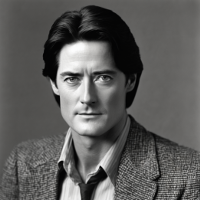
by George Pritchard
Postmarked the Stars

Cover by R. M. Powers
There is a phrase, deja vu, which refers to feeling or seeing something that you have not interacted with before, yet seems intensely familiar. These are now believed to be psychic echoes, but it is a useful term for Andre Norton's latest work, Postmarked the Stars. I was excited to begin this, as the last thing I read of hers was Star Man’s Son, which I enjoyed deeply and still own a copy of.
I want to emphasize that I did not hate this book, nor did I find it incompetent, but reading Postmarked feels like watching a piston engine. Smooth and efficient and automatic, but always quite obviously a machine. This is the fourth entry in the Solar Queen adventures, although no previous books need to be read to understand this one. The previous book in this series came out a decade ago, but I am not particularly familiar with what interest there was, or is.
Dane Thorson, assistant cargo master to the Free Trader ship Solar Queen, discovers that a strange, radioactive box on board is causing the creatures near it to change, becoming larger and more intelligent. Before the crew can figure out what to do with this information, the ship is caught in a tractor beam, and they are dragged to the planet’s surface. Dane, Tau the medical officer, and the psychic cat end up separated into a search party. A group of dead miners are found, an enormous insect monster is battled, before another tractor beam drags them and the planetary ranger onwards towards a secret base in unexplored territory. It all seems to be connected to that strange, radioactive stone!
Is there indeed gold in them thar hills?
One thing I have always enjoyed about Norton's writing, particularly given the genres she works in, is the equal footing she gives to non white characters. Even the names she gives to background characters vary in ways that speak to strength in differences amongst the stars — names from the Indian subcontinent right alongside Welsh, Jewish, and Chinese! For another example, a prospector type is introduced, and it's only mentioned half a chapter later that he is dark-skinned.
This story is a space Western, plain and simple. The recent movie, Moon Zero Two [review coming out October 18] is my immediate point of comparison, but this has been a rich vein in the genre for a long time. The potential for racism in the story is, for better or worse, replaced by that dullest of Westerns, the claim jumper plot, combined with the Pony Express or stagecoach robbery.
Norton has been publishing continuously for almost two decades at this point. Maybe she needs a break, taking a chance to look at the New Wave trends and use them for her own. I know that, given time, she can make them shine the way Star Man’s Son pushed the boundaries of boy’s adventure novels. Norton can do better, and has, but Postmarked the Stars does nothing at all.
Two stars.